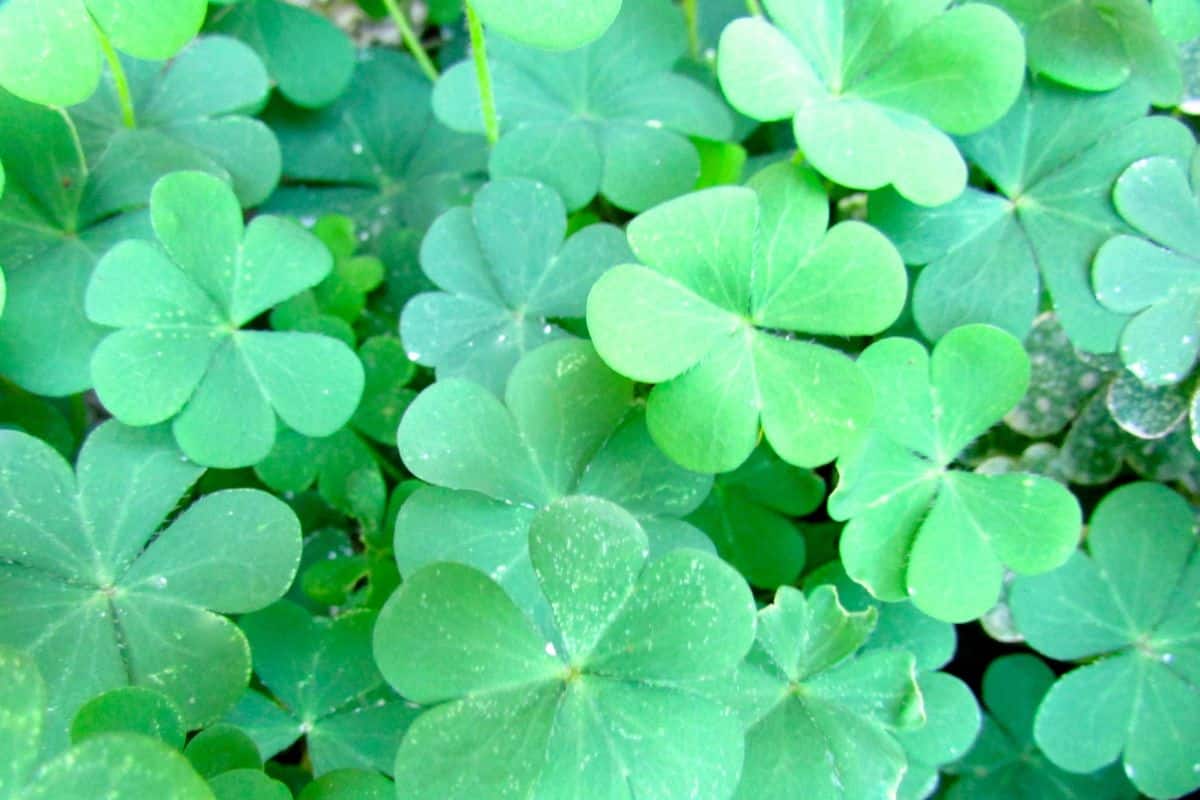Dog owners understand the frustration of yellow patches on lawns caused by pet urine. These burn marks can quickly ruin a carefully maintained yard. Many gardeners wonder if clover seed offers a solution to this common problem. Let’s explore whether clover represents a viable option for areas affected by dog urine and how it compares to traditional grass options.
Understanding dog urine damage to lawns
When dogs urinate on grass, the high concentration of nitrogen creates the characteristic brown or yellow patches. This essentially “burns” the grass with too much of what would otherwise be a beneficial nutrient. Traditional lawn grasses typically show visible damage within days of exposure.
The damage occurs because dog urine contains high levels of nitrogen compounds that, when concentrated in one spot, overwhelm grass plants. Female dogs tend to cause more noticeable damage because they typically urinate in one spot rather than marking multiple locations like males.
Climate and soil conditions also influence the severity of the damage. During hot, dry periods, urine concentration increases, making the burning effect more pronounced. Similarly, lawns with poor drainage or compacted soil suffer greater damage as the urine remains concentrated rather than diluting through the soil profile.
Understanding these mechanisms helps gardeners develop effective strategies for managing pet-friendly landscapes. Just as gardeners need to understand specific needs of different plants (like whether peach trees benefit from coffee grounds as amendments), they must consider their lawn’s tolerance to pet activities.
Benefits of clover for dog-damaged areas
Clover offers several advantages that make it an excellent choice for areas where dogs frequently urinate. Unlike traditional lawn grasses, clover demonstrates remarkable resistance to nitrogen burns from dog urine. This resilience stems from clover’s natural nitrogen-fixing abilities as a legume.
White clover (Trifolium repens) particularly excels in dog-frequented yards. Its deep root system accesses moisture below the soil surface, helping it withstand the concentrated nitrogen without developing the characteristic yellow patches. The plant actually utilizes the nitrogen rather than being damaged by it.
Beyond urine resistance, clover provides additional benefits:
- Requires less water than traditional lawns
- Needs minimal fertilization due to nitrogen-fixing abilities
- Stays green during mild drought conditions
- Grows in poor soil conditions where grass struggles
- Provides habitat for beneficial insects and pollinators
Many homeowners find that incorporating clover into existing lawns creates a more resilient yard ecosystem that handles pet traffic better. This approach mirrors nature’s diversity, similar to how opossums eat a varied diet that helps maintain backyard ecosystem balance.
Clover lawns also reduce maintenance requirements significantly. They grow more slowly than grass, requiring less frequent mowing. Additionally, clover outcompetes many common weeds, reducing or eliminating the need for herbicides in lawn care routines.
How to establish clover in dog-damaged areas
Introducing clover to areas damaged by dog urine is straightforward but requires proper timing and preparation. For best results, follow these steps when planting clover seed:
- Rake the damaged area to remove dead grass and loosen soil
- Mix clover seed with sand for even distribution
- Broadcast the seed mixture over the prepared area
- Lightly rake to incorporate seeds into the soil surface
- Water consistently until established (typically 2-3 weeks)
The ideal planting time for clover is early spring or fall when soil temperatures remain mild and rainfall is more reliable. These conditions support optimal germination rates and seedling establishment before temperature extremes arrive.
Dutch white clover (Trifolium repens) typically performs best for lawn applications, with a seeding rate of approximately 2-3 ounces per 1,000 square feet for overseeding existing lawns. For bare areas, increase to 4-5 ounces per 1,000 square feet.
Many gardeners find success with a mixed approach, combining clover with urine-resistant grass varieties. This creates a more diverse lawn ecosystem with enhanced resilience. The approach resembles companion planting methods used when growing pinto beans alongside beneficial companion plants.
For severe damage, consider installing a designated “potty area” with pea gravel or mulch, then surround it with clover to handle occasional accidents. This strategy concentrates the nitrogen impact and extends the lifespan of your lawn.
Potential drawbacks to consider
While clover offers significant advantages for dog owners, several considerations should factor into your decision. Some homeowners dislike clover’s appearance or feel compared to traditional turf grass. Its softer texture and irregular growth pattern create a less manicured aesthetic.
Clover’s attraction to bees and other pollinators represents both a benefit for biodiversity and a potential concern for families with bee allergies. During flowering periods, white clover blooms can increase bee activity in your yard.
Growth habits also differ from traditional grass. Clover spreads through stolons (above-ground runners) rather than rhizomes, creating a different recovery pattern after damage. It tends to grow in patches rather than filling in uniformly like some grasses.
Some dog owners report that clover doesn’t eliminate urine damage completely but rather reduces its severity. The effectiveness varies depending on your dog’s size, diet, and urine concentration. For extremely large dogs or multiple pets using the same areas, even clover may show some stress.
Maintaining a consistent watering schedule remains important, particularly during establishment. While clover requires less water overall than grass, newly seeded areas need consistent moisture until properly established.
Despite these potential drawbacks, most dog owners find the benefits of clover significantly outweigh the disadvantages when addressing urine damage on lawns.

